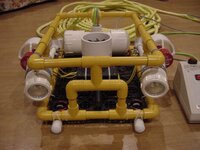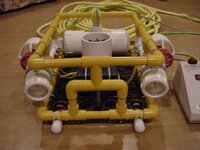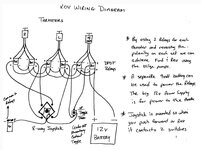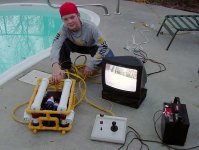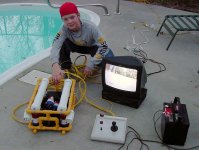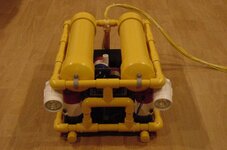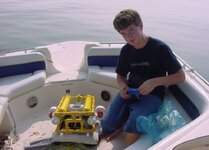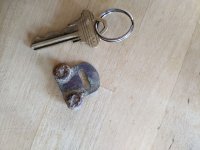pcolaboy
Hero Member
I'm currently experimenting with building a small ROV to check out several sites as deep as 100 feet. I have the overall platform built and I'm now working on the electrical and control systems. I'm using three 600gph bilge pump motors with the housings removed and a ducted fan installed for each. I will have an array of 4 smallish LED lights on the front as well as a small ccd video camera. I haven't calculated my amp requirements yet but my main concern will be voltage loss on the ambilical.
Can anyone suggest a good way to calculate how much voltage loss to expect on a given conductor size at a given distance? There may be other questions I have overlooked so please fire away with the advice.
Thanks,
Pcola
Can anyone suggest a good way to calculate how much voltage loss to expect on a given conductor size at a given distance? There may be other questions I have overlooked so please fire away with the advice.
Thanks,
Pcola


